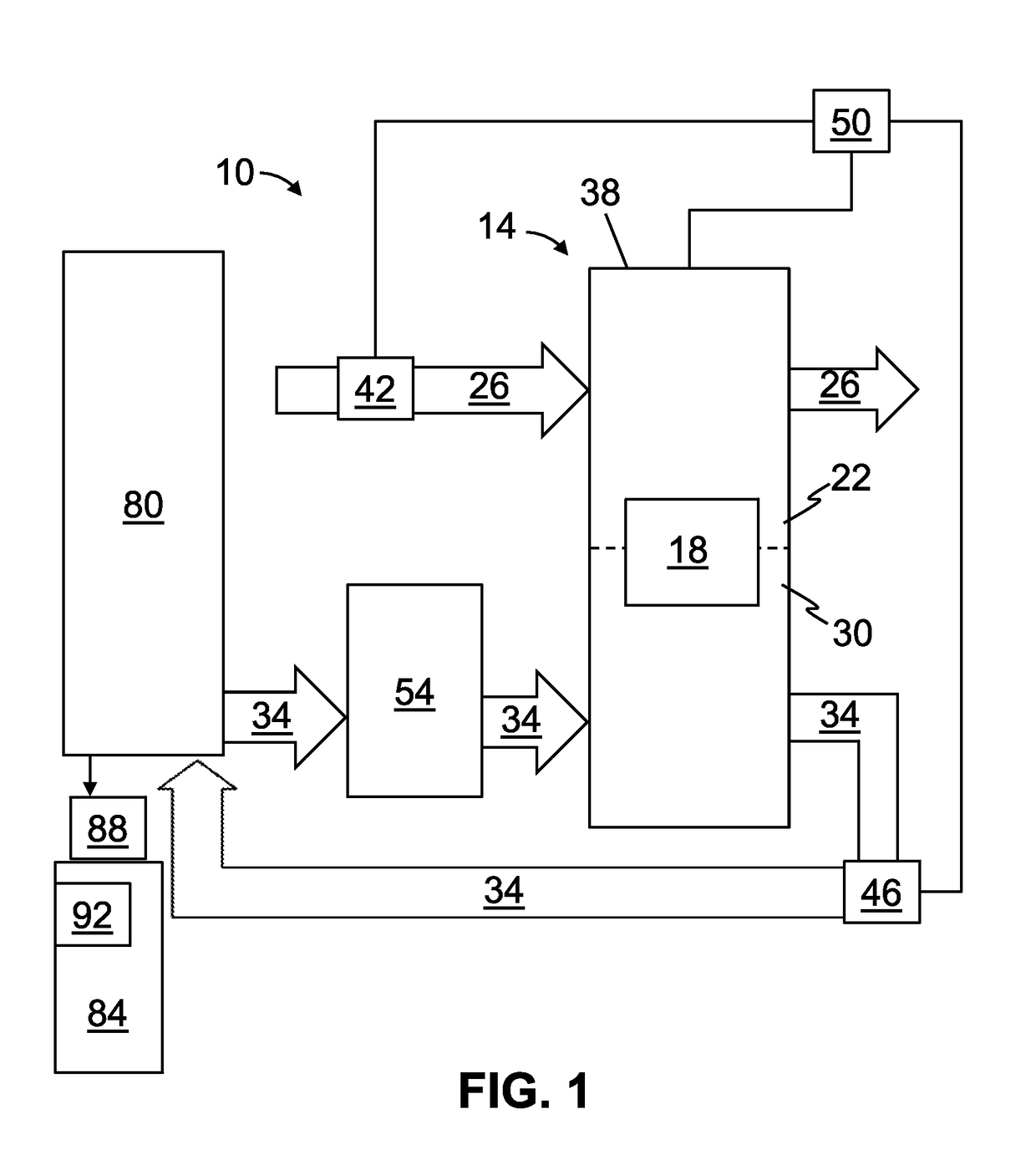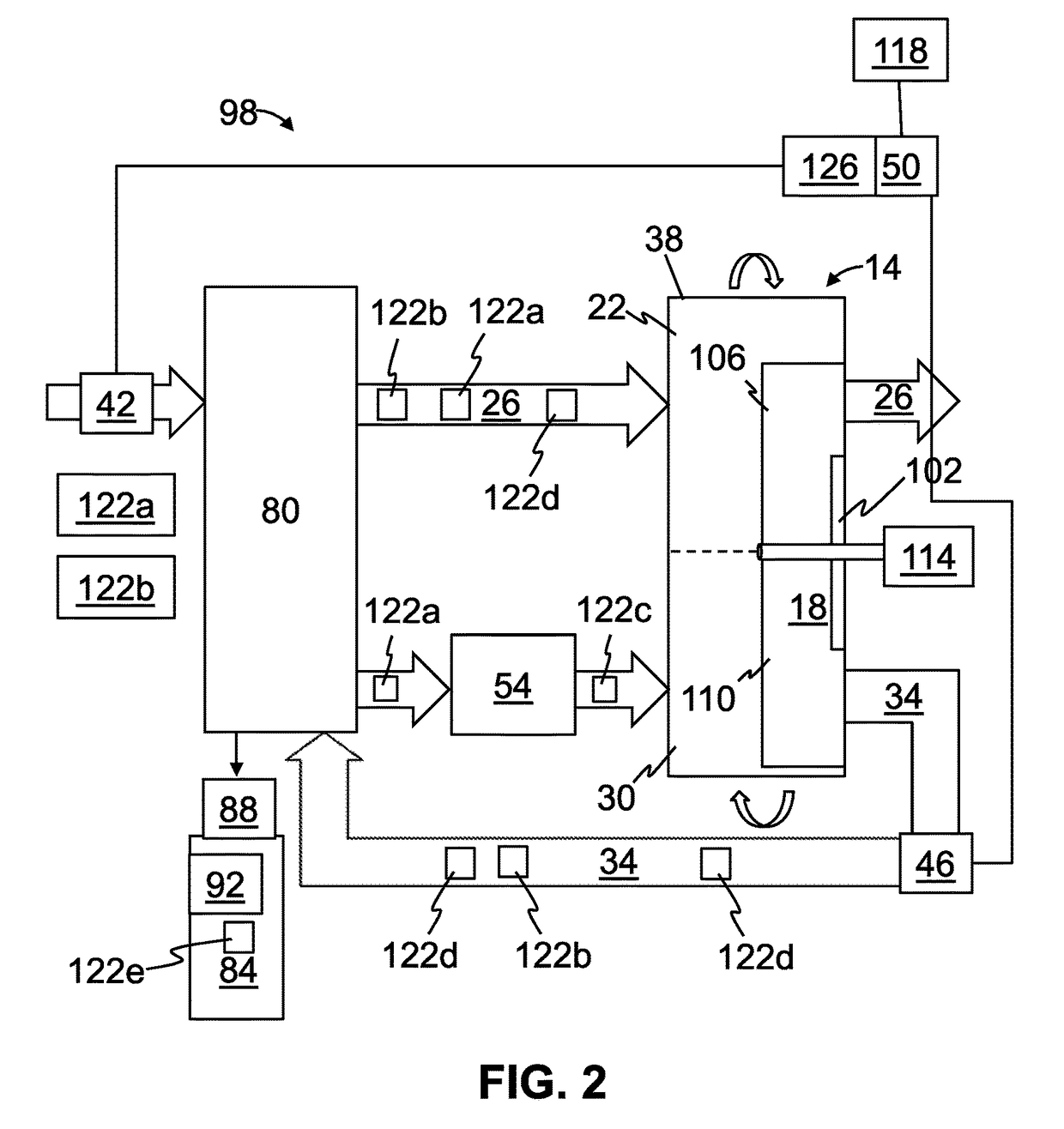Systems and methods for generating liquid water from air
- Summary
- Abstract
- Description
- Claims
- Application Information
AI Technical Summary
Benefits of technology
Problems solved by technology
Method used
Image
Examples
first embodiment
[0076]Referring now to the drawings, and more particularly to FIG. 1, shown therein and designated by the reference numeral 10 is the present systems for generating liquid water from air. In the embodiment shown, system 10 is configured to function responsive to diurnal variations. For example, as described in more detail below, system 10 is configured to control one or more operational parameters (e.g., control and / or controlled variables) based on one or more diurnal variations (e.g., variations in ambient air temperature, ambient air relative humidity, solar insolation, and / or the like).
embodiment 174
[0077]Throughout the following description, illustrative views of example components which may be suitable for use in some of the systems described below (e.g., 10, 98) are provided in FIGS. 17A-17C, which collectively depict an embodiment 174 of the present systems. The views of system 174, shown in FIGS. 17A-17C, are provided only by way of illustration, and not by way of limitation. In other words, FIGS. 17A-17C may be used to illustrate and / or provide additional description of certain components of systems 10 and / or 98, but shall not be used to limit systems 10 and / or 98.
[0078]In this embodiment, system 10 comprises a desiccant unit 14. In the depicted embodiment, desiccant unit 14 comprises a desiccant (e.g., sorption medium) 18, where the desiccant 18 (e.g., or a portion thereof) is selectively (e.g., and / or alternatively) movable between an adsorption zone 22, in which the desiccant is in fluid communication with a process air pathway (e.g., a process airflow path) 26 and a d...
embodiment 98
[0097]FIG. 2 is a diagram of an embodiment 98 of the present systems for generating liquid water from air. System 98 may be substantially similar to system 10, with the primary differences and / or additions described below. Otherwise, system 98 may comprise any and / or all features described with respect to system 10.
[0098]In system 98, as with system 10, desiccant 18 (or a first portion thereof) can be in fluid communication with process air in process air pathway 26 while the desiccant 14 (or a second portion thereof) is simultaneously in fluid communication with regeneration fluid in regeneration fluid pathway 34, and, thus, desiccant unit 14 operates in a continuous and non-batch manner. In this embodiment, sections of desiccant 18 are each exposed to air in process air pathway 26 and fluid in regeneration fluid pathway 34 in an alternating manner.
[0099]In the embodiment shown, system 98 comprises a rotatable disk 102 (e.g., with desiccant 18 disposed thereon). In this embodiment,...
PUM
 Login to View More
Login to View More Abstract
Description
Claims
Application Information
 Login to View More
Login to View More - R&D
- Intellectual Property
- Life Sciences
- Materials
- Tech Scout
- Unparalleled Data Quality
- Higher Quality Content
- 60% Fewer Hallucinations
Browse by: Latest US Patents, China's latest patents, Technical Efficacy Thesaurus, Application Domain, Technology Topic, Popular Technical Reports.
© 2025 PatSnap. All rights reserved.Legal|Privacy policy|Modern Slavery Act Transparency Statement|Sitemap|About US| Contact US: help@patsnap.com



